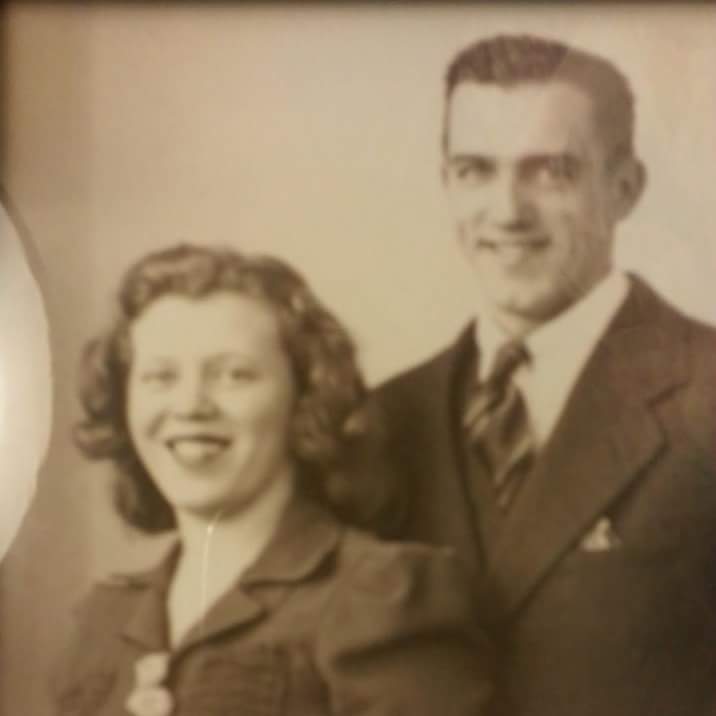Remember our Colorado miner, Cal Ingram, the one my brother Rodney looked like? Today we’re going back on his mother’s side of the family. I always say that Dad’s side were the “Johnny come lately” ancestors, but that’s not actually true.
Cal Ingram was born to James Ingram and Elizabeth Van Metre (Meter, Matre–any of those have been used). Elizabeth was born May 14, 1805, in Orange County, Indiana to Isaac Van Metre and Mary Caldwell. Her father, Isaac was born in 1778 in Ohio County, Virginia, which is now actually West Virginia. His parents were Joseph Van Metre and Drusilla (or possibly Margaret) Morgan. Joseph’s will names a portion for Drusilla, although there is some speculation that he first married Margaret, and when she passed, he married her sister.
Going a generation further back, Joseph is the son of Abraham Van Metre and Ruth Hedges. It is believed that he was born in 1743 in Somerset County, New Jersey. His father, Abraham is the son of John Van Metre and Margaret Melanaur (I’m not totally positive this is her maiden name, but so far, the research looks promising. It could be some variation.) Abraham was born about 1721. Abraham is who we are learning about today. I will say that it is difficult looking through all these generations of Van Metres, all of whom named their sons Joseph, Abraham, John,and Isaac. Luckily there was a helpful e-book on Google Books entitled “A Genealogy of the Duke-Shepherd-Van Metre Family, From Civil, Military, Church and Family Records and Documents”, edited by Samuel Gordon Smyth, 1909.
Abraham first married Ruth Hedges from Prince County, Maryland in 1742. To their union was born Jacob, Abraham, Isaac, Joseph, Rebecca and Mary. After Ruth’s death, Abraham married Martha Roberts Wheeler and had four more children: John, Ruth, Daniel and Hannah.
Upon the death of his father, in 1745, Abraham received several parcels of land, amounting to 537 acres. On March 8, 1748, he was appointed as “overseer of road from Simon Linders to Old Sayds” by the court of Frederick County, Virginia.
The Van Metres were famed as grazers and cattle traders. Abraham was no different. He and his brothers had extensive business with the frontier posts, the frontier being the Ohio Valley, at that time. In July of 1772, Abraham and his brothers were apparently in Washington County, Pennsylvania. There is an indictment against them for a riot. (Are we surprised that our ancestors were involved in a riot?) Included were Abraham, Henry and Jacob Van Metre, plus John, John Jr. and Thomas Swan.
Abraham later moved to Ohio County, Virginia, to property located on Short Creek, some of which was not surveyed until 1786, when his heirs held the property. Black’s Cabin, which was a part of the above property, was where Ohio County was created out of the District of West Augusta on January 6, 1777. Abraham sold Black’s Cabin to the county for 20 pounds. A stockade was erected on Short Creek, a few miles above where it met the Ohio River. It was known as Van Metre’s Fort.

Abraham died sometime in 1783 with his will probated November 18, 1783. Guess they weren’t such “Johnny come lately” ancestors.






















 Avis Lenell Smith came into this world on November 24, 1921. She is the oldest child and daughter of Norval A. Smith and Beulah Frances Slaback. They lived in Viola, Wisconsin. As a young child, Avis attended Goose Creek School. Her parents farmed, but her father also worked part time for the county, I’m not sure if it was Richland or Vernon, as Viola is in both. This additional work on her father’s part, gave her parents the ability to provide shoes for her, even in the milder months.
Avis Lenell Smith came into this world on November 24, 1921. She is the oldest child and daughter of Norval A. Smith and Beulah Frances Slaback. They lived in Viola, Wisconsin. As a young child, Avis attended Goose Creek School. Her parents farmed, but her father also worked part time for the county, I’m not sure if it was Richland or Vernon, as Viola is in both. This additional work on her father’s part, gave her parents the ability to provide shoes for her, even in the milder months. John Louis Jones was born January 16, 1919 to William Robert Jones and Mary Margaret Moore. He was known to one and all as Jack. John Louis was not his original name. It took three birth certificates to arrive at the name he used during his life. His original birth certificate proclaimed his name to be Robert John Jones. The next version, which was filed right after the first, said his name was Robert Louis Jones. It wasn’t until May 17, 1967, on an amendment signed by his mother, that he is listed as John Louis Jones.
John Louis Jones was born January 16, 1919 to William Robert Jones and Mary Margaret Moore. He was known to one and all as Jack. John Louis was not his original name. It took three birth certificates to arrive at the name he used during his life. His original birth certificate proclaimed his name to be Robert John Jones. The next version, which was filed right after the first, said his name was Robert Louis Jones. It wasn’t until May 17, 1967, on an amendment signed by his mother, that he is listed as John Louis Jones. Jack attended Readstown High School and graduated with the class of 1938. One night, he went to a dance…
Jack attended Readstown High School and graduated with the class of 1938. One night, he went to a dance…